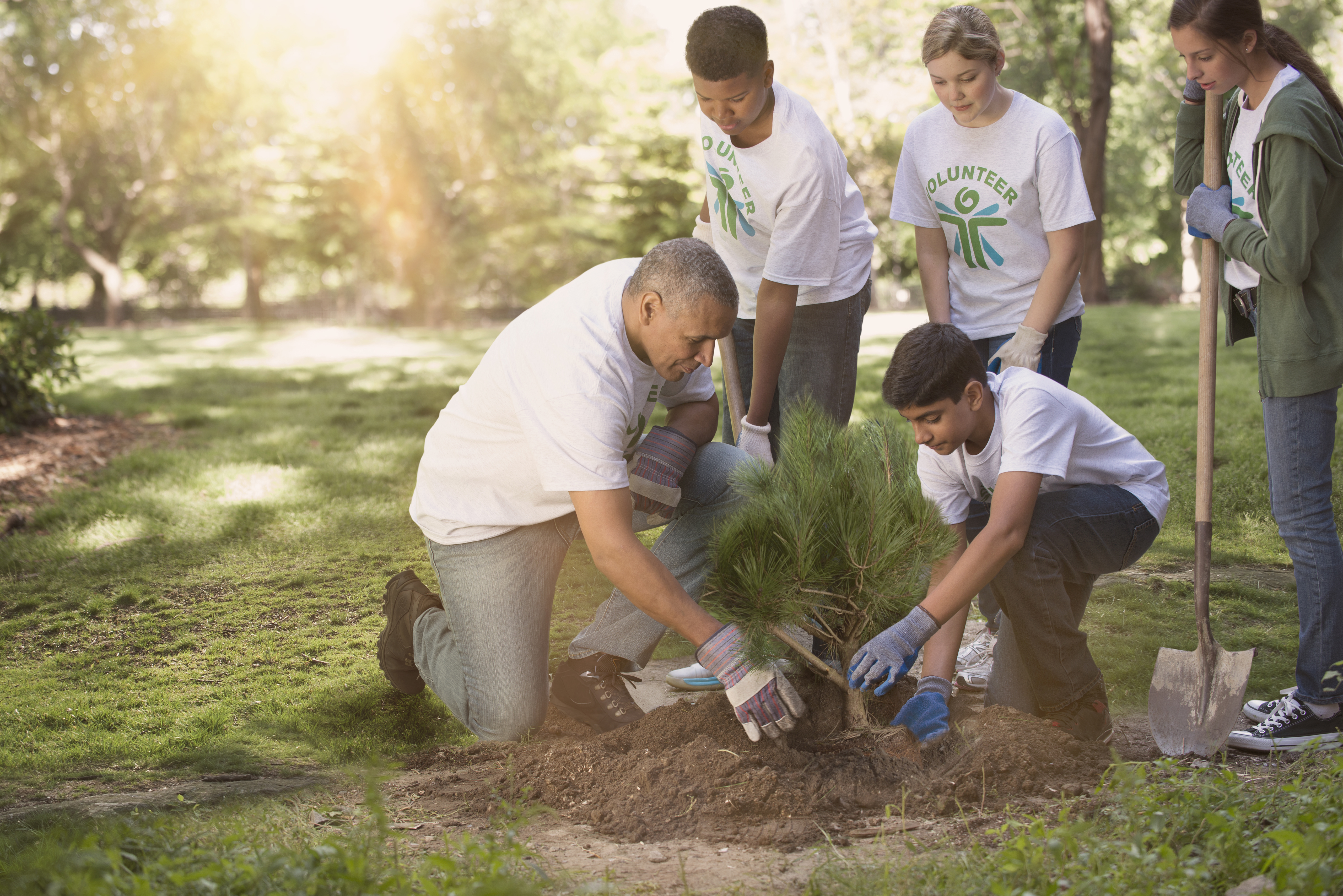Since childhood, Maisie Hughes has been drawn to trees. In her own words, she’s “obsessed.” And yet, as a Black woman, she has also felt somewhat uncomfortable in nature. “When I would visit really beautiful landscapes that I felt were sublime . . . ,” she says, “I also felt like I didn’t belong in those spaces.” That uneasiness, she explains, was due to age-old cultural narratives “that nature is something that is reserved for the wealthy.”
In order to help change this narrative, Hughes founded the Urban Studio, her own nonprofit dedicated to equitable and sustainable urbanism, and now works on urban forestry for American Forests, a conservation organization founded in 1875.
Hughes joins us on this week’s episode of World Changing Ideas to discuss her work on urban forests, and tree equity: ensuring that trees are available for everyone’s benefit in an urban area, not just for the white and wealthy.
Trees are vital because they bring mental and physical health benefits to city residents, and provide shade and cooling as the threat of extreme heat increases. But across the country, neighborhoods with majority people of color have 33% less tree canopy than majority white ones; and wealthier neighborhoods get 65% more canopy than less-wealthy ones. “People of color are disregarded, disrespected, and ignored in the design of their own cities,” Hughes says. That’s increasingly troubling as minorities and low-income individuals are the most heavily impacted by climate change.
It’s not enough to simply have trees; they need to be in the right places. Hughes’s team strategically chooses where trees should be planted, based on where the most vulnerable live, where their cooling effect is most needed, and where the scarcities are. All this data is now live and accessible on an online map that American Forests developed, called the Tree Equity Score. With this information, the team can work on the ground with cities to show them where to plant trees. It’s working with 12 cities at the moment, including Dallas, Detroit, and Phoenix, and the goal is to work with 100 cities by 2030.
It’s not enough to just plant trees, Hughes says, despite various companies these days boasting tree-planting schemes. “Tree planting is sexy, especially if you’re on social media,” she says. “But, the hard part is to make sure that tree that you planted lives. We don’t want you to spend your time planting a tree that doesn’t survive.”
American Forests view this as an added benefit: Health and climate-mitigating benefits aside, tree planting and maintaining can also create jobs for new urban foresters, and can help diversify the workforce in the field. For instance, American Forests partners with Tazo Tea and the Davey Tree Expert Company, a sustainable arborist organization, to implement the Tazo Tree Corps, which employs people of color to plant and care for thousands of trees in cities, including San Francisco and Minneapolis.
The work on the Tree Equity Score continues: The team is now working on new AI technology to enhance the experience, and it will soon also overlay local stories onto the maps to help provide context. But, the core tech remains one of the oldest in the world: the trees themselves. “As a collection in the city,” Hughes says, “they really are one of the best technologies for adapting to climate change.”
You can listen and subscribe to World Changing Ideas on Apple Podcasts, Stitcher, Spotify, Google Podcasts, or wherever you get your podcasts.
This article was written by Talib Visram from Fast Company and was legally licensed through the Industry Dive publisher network. Please direct all licensing questions to legal@industrydive.com.







